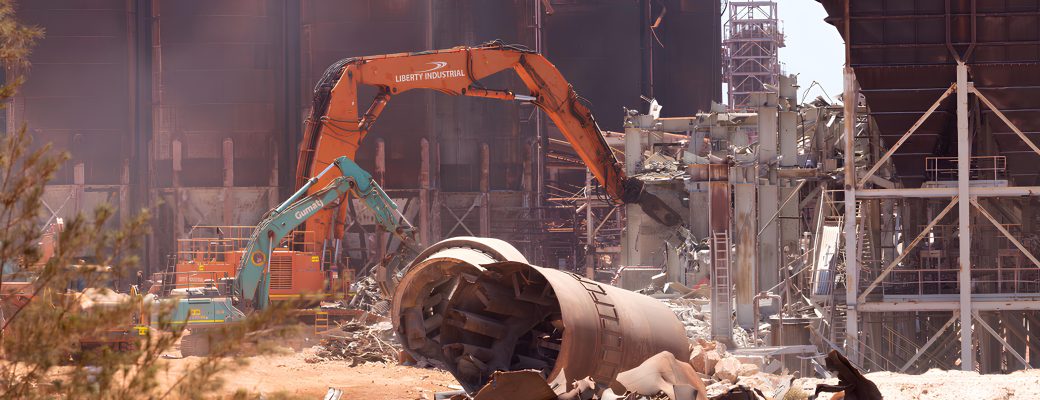Rio Tinto is undertaking the largest demolition project in Australia’s history at its Gove alumina refinery site in Australia’s Northern Territory, where it has now begun shipping the equivalent of three Sydney Harbour bridges, or 21 Eiffel Towers, in scrap steel for recycling.
The demolition is part of the broader closure program at Rio Tinto’s Gove Operations in East Arnhem Land, where bauxite mining is expected to cease later this decade.
The first shipment, containing about 15,000 tonnes of scrap steel, recently left the Gove wharf for Asia to be converted into new steel wire, bar and beam products. In total, 142,000 tonnes of steel in 10 shipments will be exported to Asia from the Gove Refinery site, where demolition began last year. Around 300,000 tonnes of concrete will also be recycled for local road construction and other projects.
As well as being a feat in Australia’s history of demolition, the project is also one of the largest underway around the world. The refinery demolition is being led by Liberty Industrial.
Liberty Industrial Gove Refinery Closure Project Director Anthony Milanich said “We are very pleased with how this substantial project has been going, with the first of many scrap load outs successfully completed in better-than-expected time.
“We look forward to continuing our journey with Rio Tinto and Traditional Owners, who we consult and work with closely. This close collaboration has helped us find solutions to a number of challenges associated with a project of this size and complexity in a remote location.
“Liberty Industrial is committed to working with local subcontractors and Traditional Owners in a mutually beneficial way, including through work opportunities and demolition traineeships.”
The Gove Refinery processed bauxite mined nearby into alumina from 1972 to 2014. In 2017 the decision was made to permanently close the refinery, and work began to prepare the site for demolition and remediation.
Rio Tinto Gove Closure General Manager James Low said “This iconic site holds a lot of memories for the thousands of people who worked here over the last five decades. But even more significant is the immemorial connection that the Gumatj Traditional Owners have with the land. We are excited to be part of the work that returns the site to them.”
“The Gumatj are integral to what we are doing at the refinery. They are the key decision-makers for how the site will be left in the future, including whether infrastructure like the wharfs and warehouses will be handed over for ongoing use. Their business arm is also supplying equipment for the demolition.”
